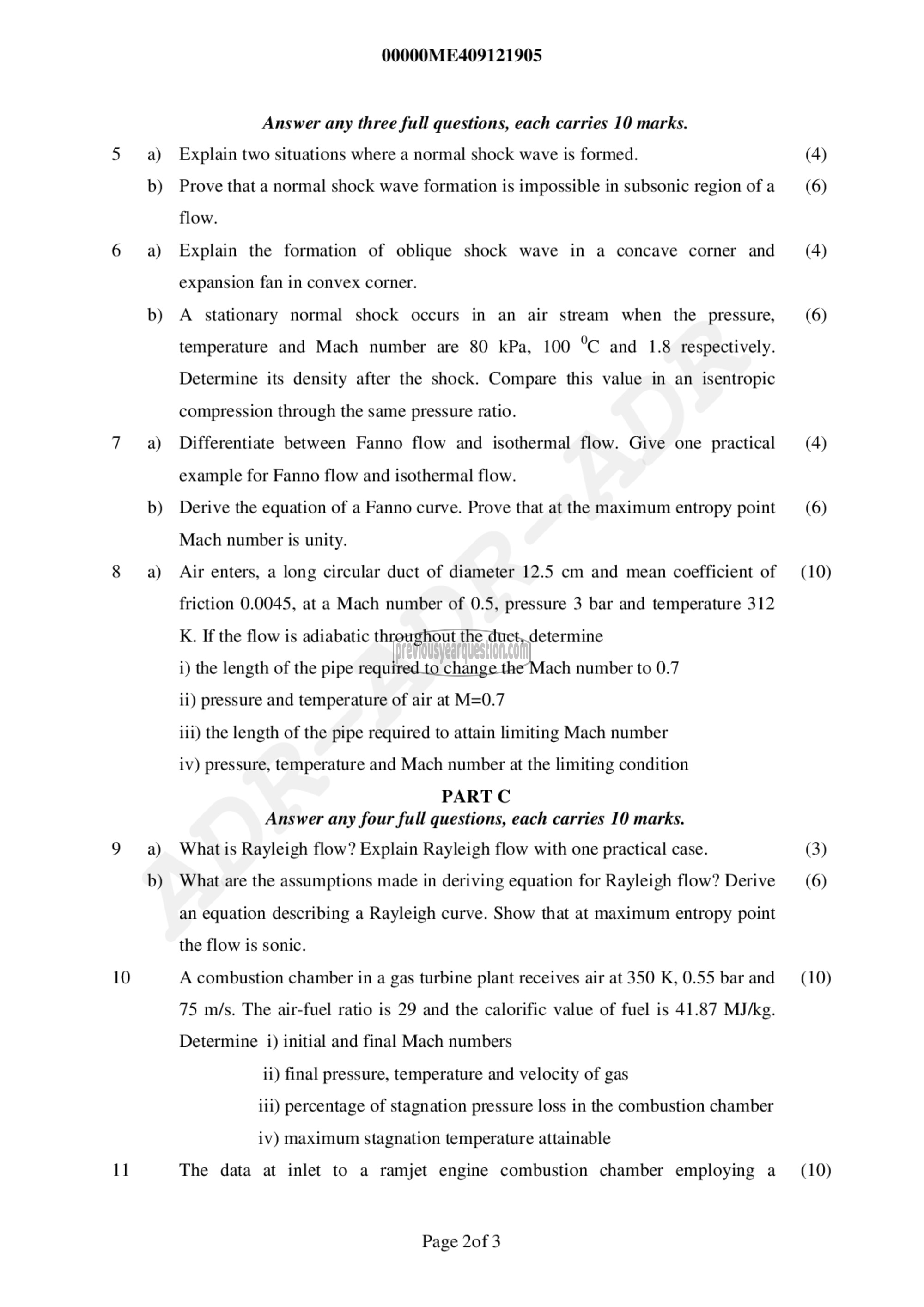APJ ABDUL KALAM TECHNOLOGICAL UNIVERSITY Previous Years Question Paper & Answer
Semester : SEMESTER 7
Subject : Compressible Fluid Flow
Year : 2020
Term : SEPTEMBER
Branch : MECHANICAL ENGINEERING
Scheme : 2015 Full Time
Course Code : ME 409
Page:2
10
11
ಬ
0)
a)
b)
a)
b)
a)
a)
00000ME409121905
Answer any three full questions, each carries 10 marks.
Explain two situations where a normal shock wave is formed.
Prove that a normal shock wave formation is impossible in subsonic region of a
flow.
Explain the formation of oblique shock wave in a concave corner and
expansion fan in convex corner.
A stationary normal shock occurs in an air stream when the pressure,
temperature and Mach number are 80 kPa, 100 °C and 1.8 respectively.
Determine its density after the shock. Compare this value in an isentropic
compression through the same pressure ratio.
Differentiate between Fanno flow and isothermal flow. Give one practical
example for Fanno flow and isothermal flow.
Derive the equation of a Fanno curve. Prove that at the maximum entropy point
Mach number is unity.
Air enters, a long circular duct of diameter 12.5 cm and mean coefficient of
friction 0.0045, at a Mach number of 0.5, pressure 3 bar and temperature 312
K. If the flow is adiabatic throughout the duct, determine
i) the length of the pipe required to change the Mach number to 0.7
ii) pressure and temperature of air at M=0.7
iii) the length of the pipe required to attain limiting Mach number
iv) pressure, temperature and Mach number at the limiting condition
PART C
Answer any four full questions, each carries 10 marks.
What is Rayleigh flow? Explain Rayleigh flow with one practical case.
What are the assumptions made in deriving equation for Rayleigh flow? Derive
an equation describing a Rayleigh curve. Show that at maximum entropy point
the flow is sonic.
A combustion chamber in a gas turbine plant receives air at 350 K, 0.55 bar and
75 m/s. The air-fuel ratio is 29 and the calorific value of fuel is 41.87 MJ/kg.
Determine i) initial and final Mach numbers
ii) final pressure, temperature and velocity of gas
iii) percentage of stagnation pressure loss in the combustion chamber
iv) maximum stagnation temperature attainable
The data at inlet to a ramjet engine combustion chamber employing a
Page 2of 3
(4)
(6)
(4)
(6)
(4)
(6)
(10)
(3)
(6)
(10)
(10)
